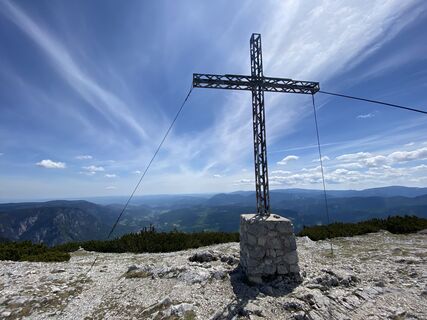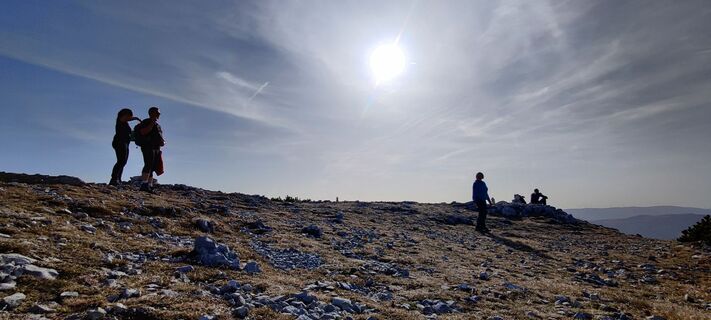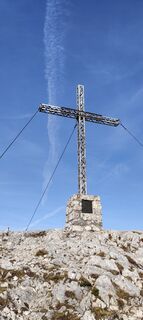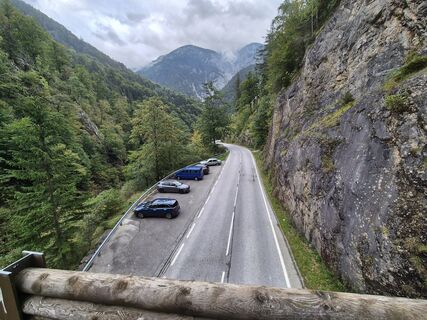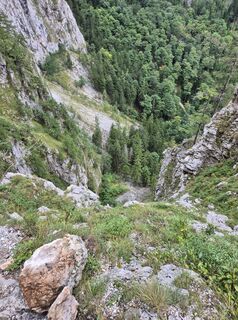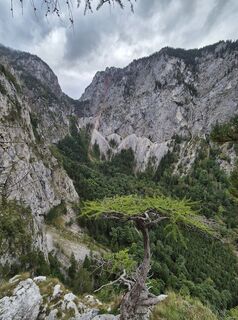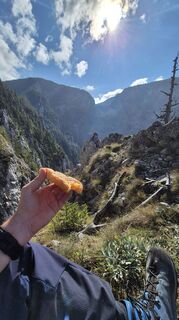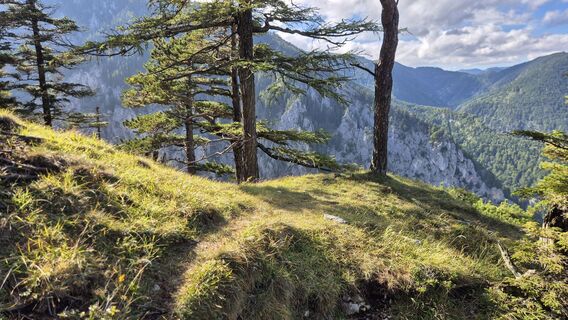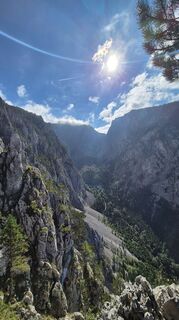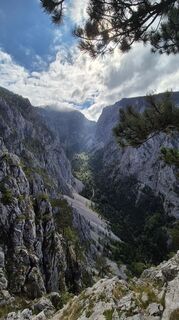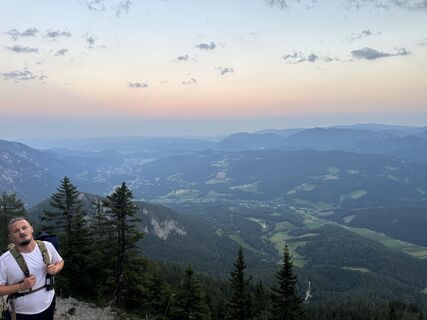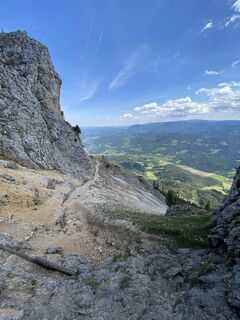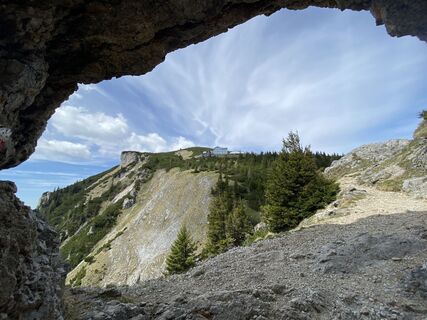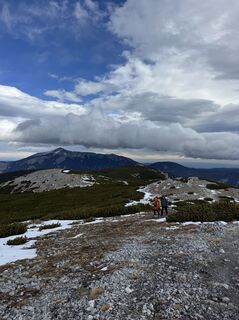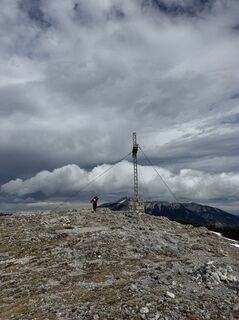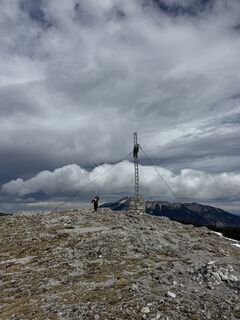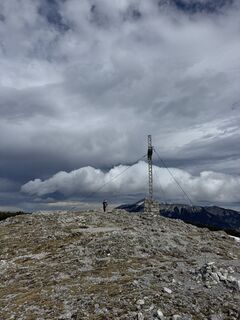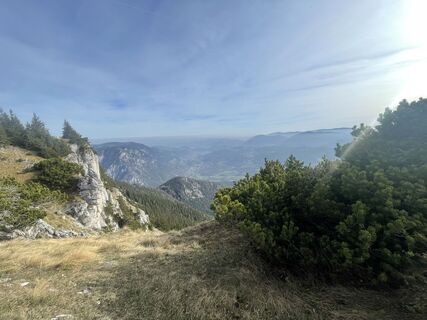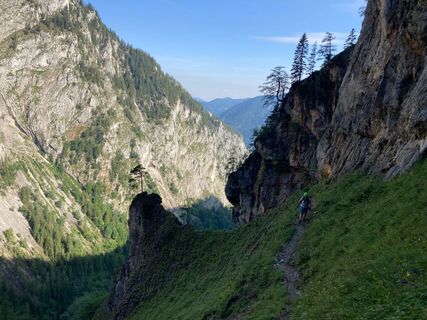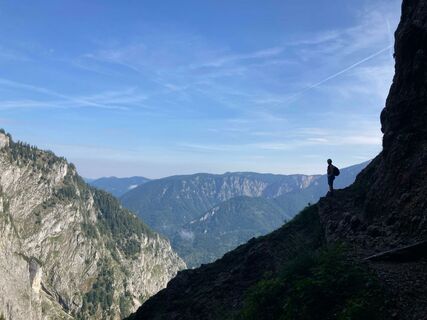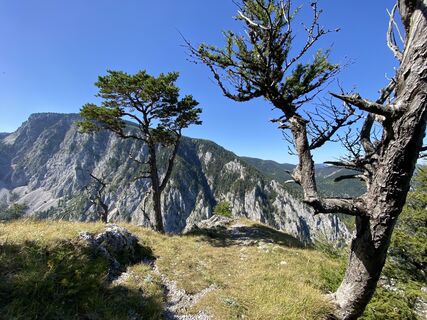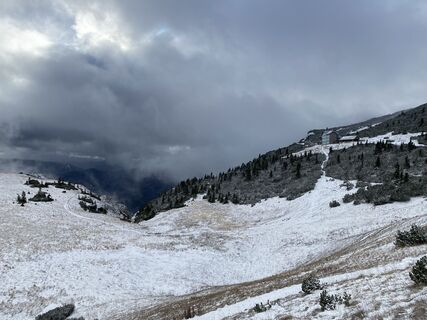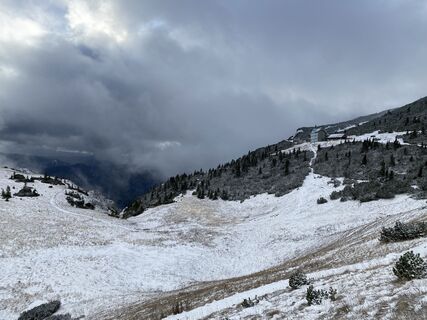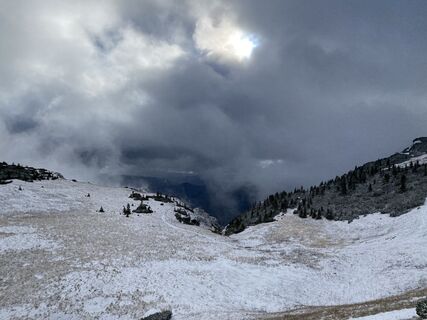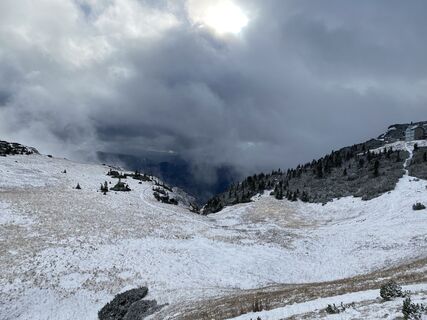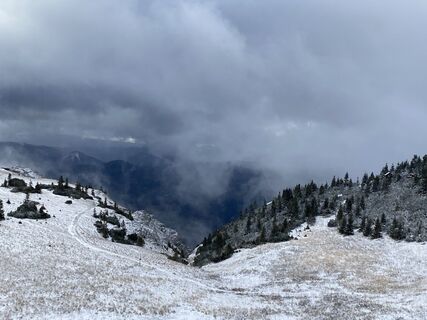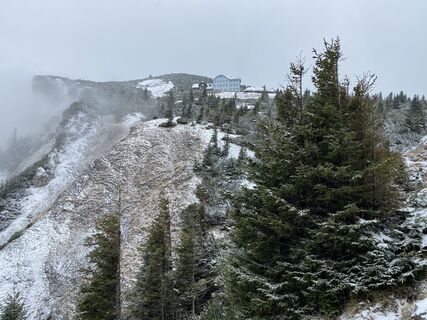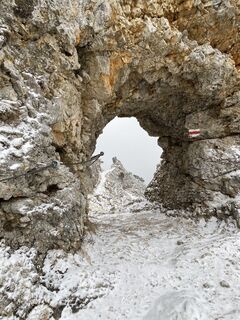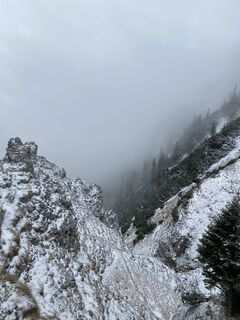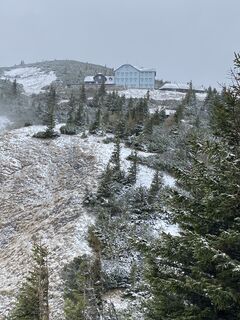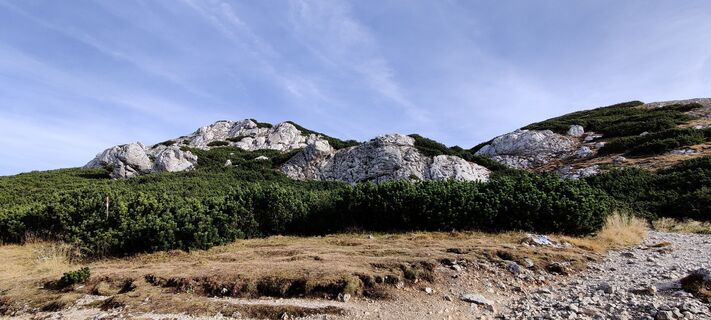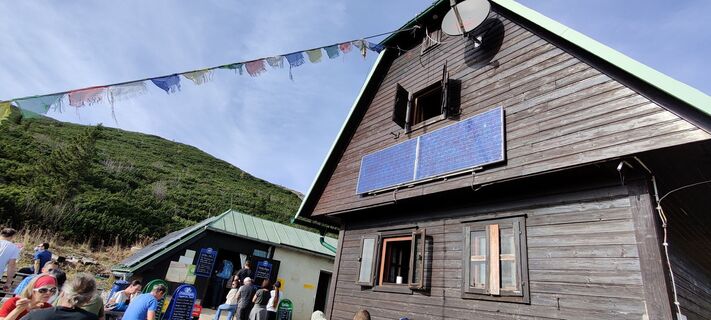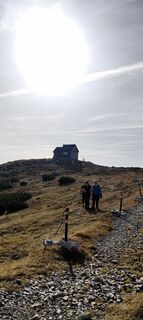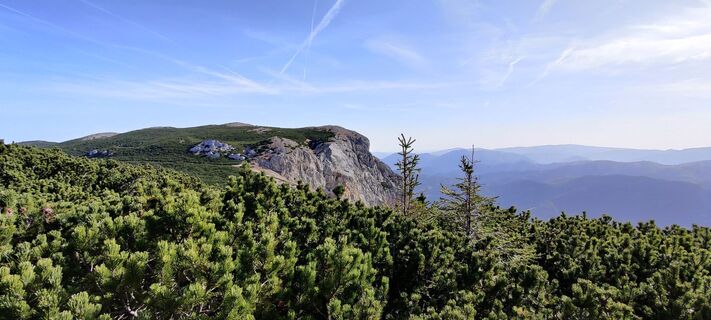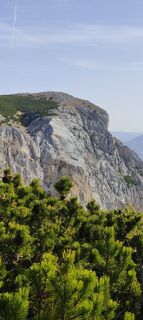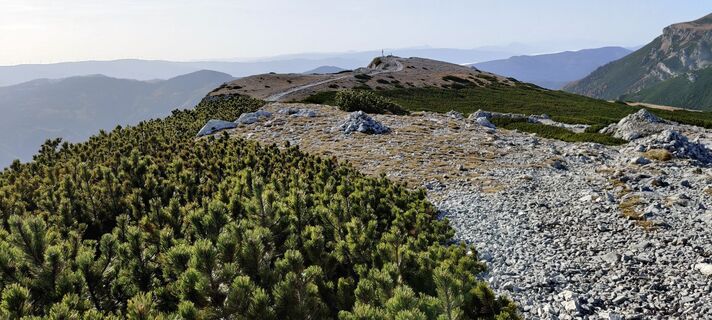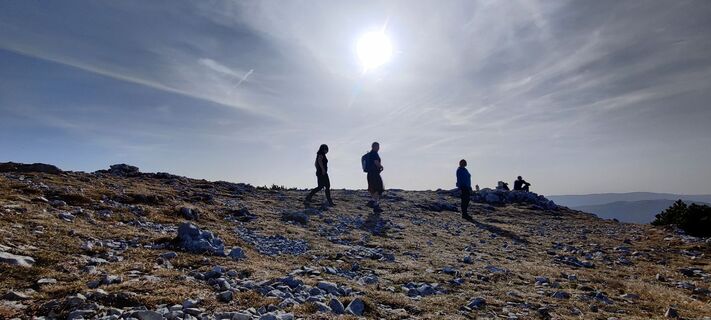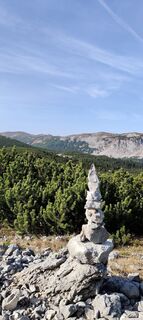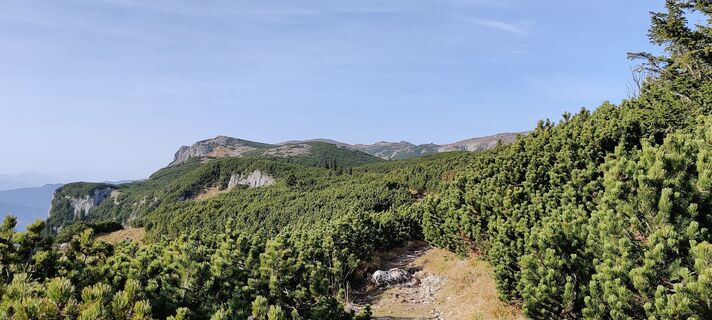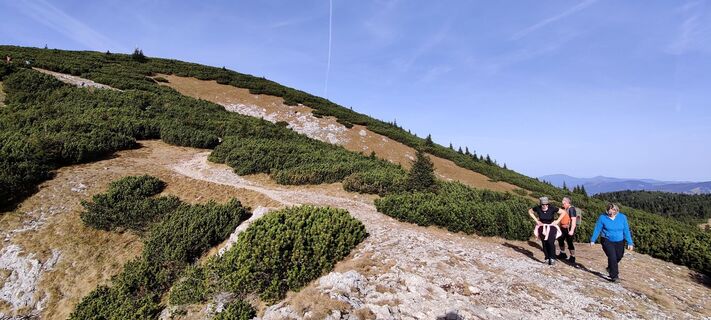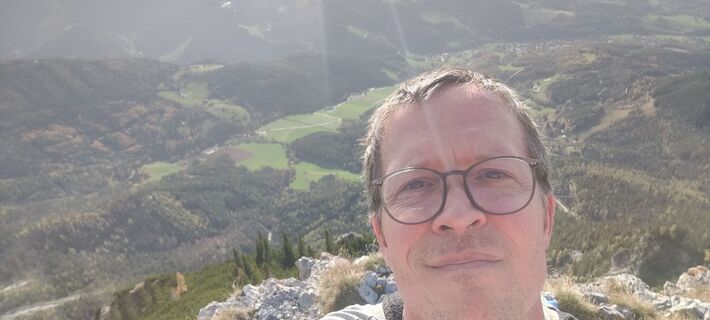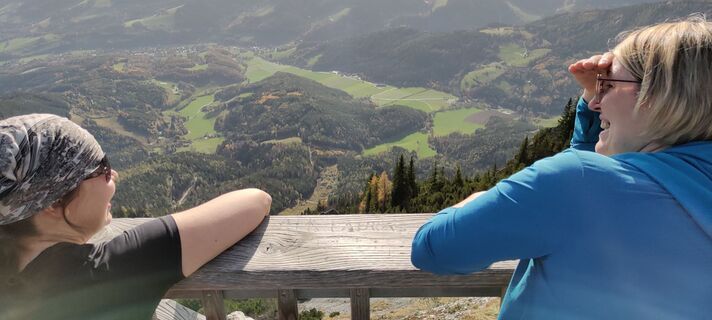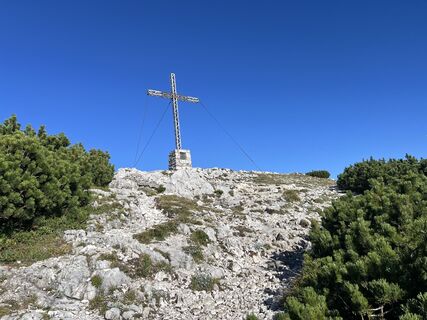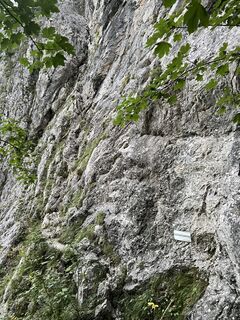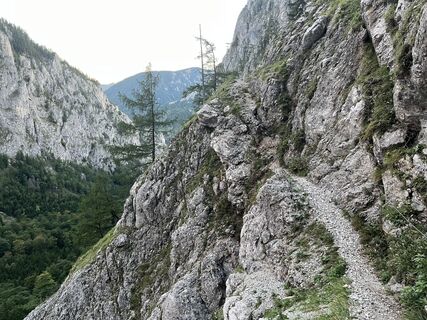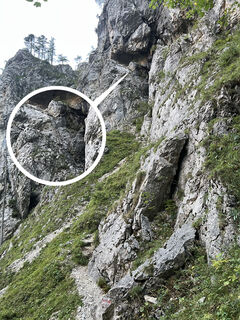Photos from our users
The Wachthüttelkamm parking lot is located in the immediate vicinity of an avalanche protection structure and is an ideal starting point for ascents of the Rax via one of the many via ferratas in the Große...
The Wachthüttelkamm parking lot is located in the immediate vicinity of an avalanche protection structure and is an ideal starting point for ascents of the Rax via one of the many via ferratas in the Große Höllental.
Via the Schönbrunnerstiege ins Große Höllental
The tour starts here. After crossing the road, follow the well-signposted trail over small rocky steps toward the "Teufelsbadstubensteig." Do not take the turnoffs toward Wachtlhüttlkamm (this will be our ascent route)! The path leads along rock faces, secured in sections with steel cables, initially above and parallel to the road to the entrance to the Große Höllental. A bend to the left takes you to the valley, and then the view opens up to an imposing steel staircase: the Schönbrunnerstiege, which should be reached after about 10 minutes of hiking. Thanks to this staircase, the 60 meters of elevation gain can be overcome quite easily, although the length does represent a first test for the muscles.
Via the Teufelsbadstuben via ferrata to the Rax Plateau
After about 2.4 km (1.5 mi), or about 55 minutes, you reach the start of the Teufelsbadstubensteig. Immediately after the start, a ledge leads along the rock face to a gully, which has been secured with an iron ladder.
Soon after, the trail becomes much easier in terms of technique, and in some sections it is basically walking terrain, although in many places a slip could have fatal consequences, which is why the steel cable provided for your own safety is definitely recommended. Finally, in the distance, you can see an iron ladder hanging from the steep rock face, giving an idea of the further course of the trail. Damp, cave-like structures can be seen throughout the rock face, which at least gives you an idea of why the trail is called the Teufelsbadstuben Steig (Devil's bathroom). Once you reach the iron ladder, the trail leads steeply and exposedly upwards.
It also marks the second, somewhat more technically demanding section of the via ferrata, which finally leads through a beautiful, pleasant chimney with plenty of footholds and holds back onto easier scree terrain.
The upper part of the trail is only sporadically secured. Along the right edge of a scree gully, the path leads steadily upwards over so-called "Schrofen," rocky terrain interspersed with grass and often scree. Here, it is essential to pay attention to the red markings to avoid having to struggle up directly into the scree gully, which is extremely prone to rockfall. Wearing a rockfall helmet is definitely recommended on the Teufelsbadstubensteig. The actual scree gully is later crossed at a point secured with a steel cable. The greatest difficulties have now been overcome, and the trail winds its way further up through the forest, offering magnificent panoramic and deep views of the Großes Höllental valley at several points.
Now, a few forks in the path follow. First, the Preintalersteig trail turns left. This is a trail through rocky terrain rated for difficulty (UIAA I) without any fixed steel cables or stirrups. A few meters further on, another fork in the path follows. If you keep left at this point, you descend back into the Höllental valley via the "Wachthüttelkamm". You can either shorten the tour this way or note the fork and keep right to cross the Rax plateau toward the "Ottohaus" mountain hut. T
On the Rax Plateau to the Ottohaus
he path mostly climbs gently through the forest. Clearings offer magnificent views of the Schneeberg mountain opposite and its peak, the "Klosterwappen".
After about 3 km (1.86 mi) from the fork in the trail to the Wachthüttelkamm, you reach the "Praterstern". Here, various hiking trails converge in a star shape. From here, the Ottohaus and the summit of the nearby Jakobskogel (1737 m / 5699 ft) seem almost within reach.
The last meters to the summit
The trail continues along a wide forest road to the Ottohaus. The trail then continues through mountain pine forest, along the cliff edge, and past a viewpoint. About a 10-minute walk from the viewpoint, a path branches off to the right, leading to the summit of Jakobskogel (1737 m / 5699 ft). It's not long before you're standing in front of the imposing summit cross.
From here, you have a magnificent view of the Rax Plateau, and even the highest peak in the Rax, the Heukuppe (2007 m / 6585 ft), is clearly visible from a distance thanks to the monument erected on its summit. The Schneeberg, shining in the morning sun, is unmistakable and draws the eye. The summit was reached after just over 3.5 hours. From here, the hike continues down the north side through mountain pines to the Ottohaus, where you can stop for a well-deserved refreshment.
Descent via the Wachthüttel ridge
The route back to Höllental initially follows the exact same path across the plateau that was taken on the ascent. The slight descent is much quicker, and after about an hour, you reach the fork in the path that you remembered on the ascent. Instead of descending again via the Teufelsbadstubensteig, keep right and follow the signs toward Wachthüttelkamm. The descent becomes increasingly steep and proves to be a beautiful one. Magnificent views of the Große Höllental valley open up again and again, and the view of the Schneeberg mountain proves to be a true companion from now on.
Steep step after steep step, you descend the ridge toward the valley until you finally reach sections secured with fixed steel cables and even more steel ladders. The terrain becomes significantly rockier, and at this point it's clear why the Wachthüttelkamm (A) is designated as a via ferrata—albeit an easier one. Nevertheless, the technically not particularly challenging climb should not be taken lightly, especially on the descent, and one should concentrate on taking one step at a time. A slip here, too, can have unpleasant consequences.
Back at the parking lot
After about six hours, we reach the starting point of the tour, the Wachthüttelkamm parking lot. The tour was more physically demanding than expected, and the descent over the Wachthüttelkamm, in particular, was unexpectedly steep. Nevertheless, this hike captivates with its breathtaking landscape, alternating between rugged cliffs and gentle elevations on the plateau.

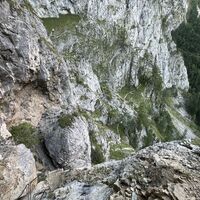
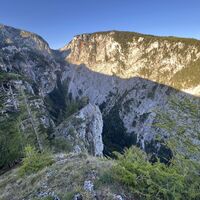
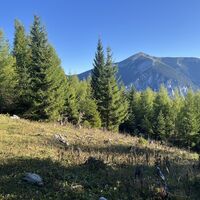
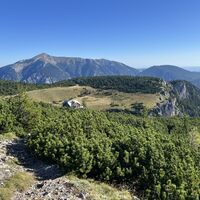
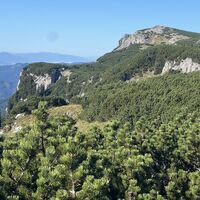

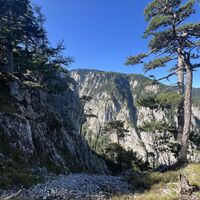
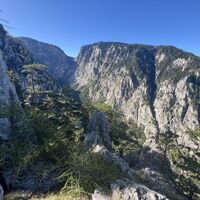
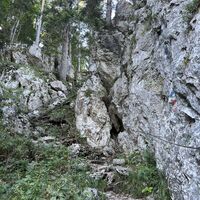
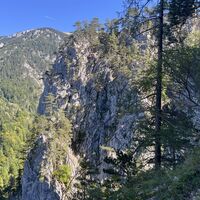
Shortened version: After the ascent via the Teufelsbadstubensteig, immediately descend via the Wachthüttelkamm.
Ottohaus
Yes
Yes
Yes
Via ferrata set and, above all, a rockfall helmet, sufficient water.
Wachthüttelkamm parking lot
The Höllental Valley and the Teufelsbadstubensteig trail are shaded in the mornings, providing ideal conditions for a climb even on hot summer days.
Webcams of the tour
Popular tours in the neighbourhood
Don't miss out on offers and inspiration for your next holiday
Your e-mail address has been added to the mailing list.





